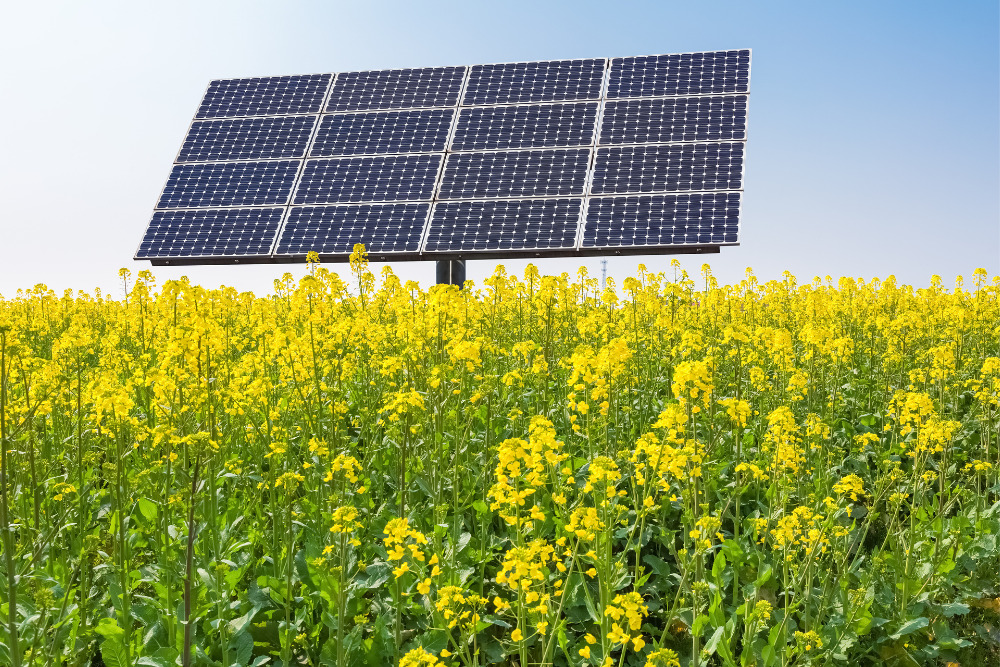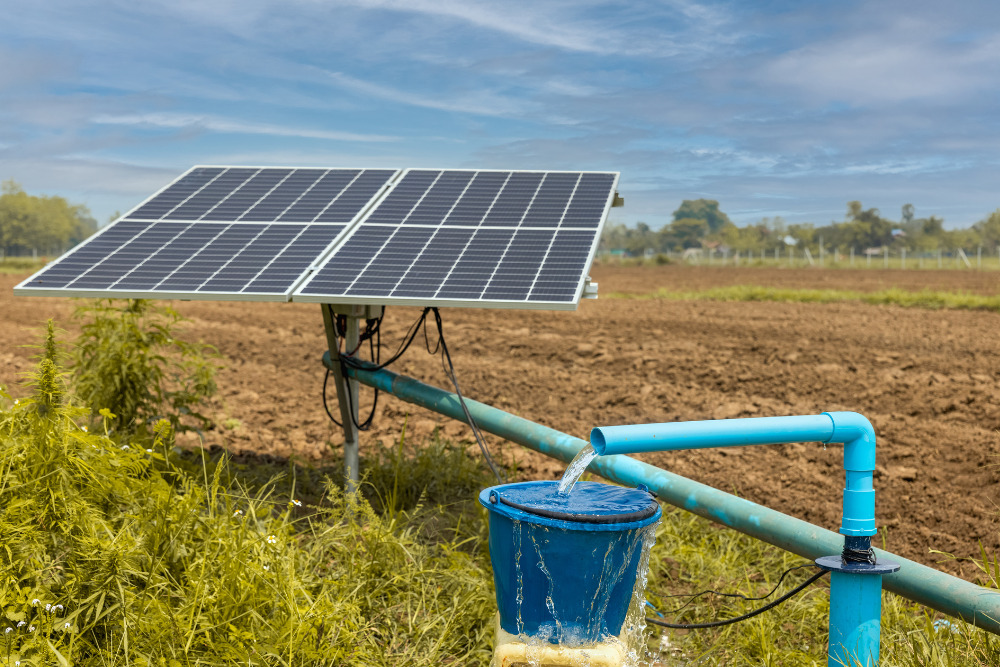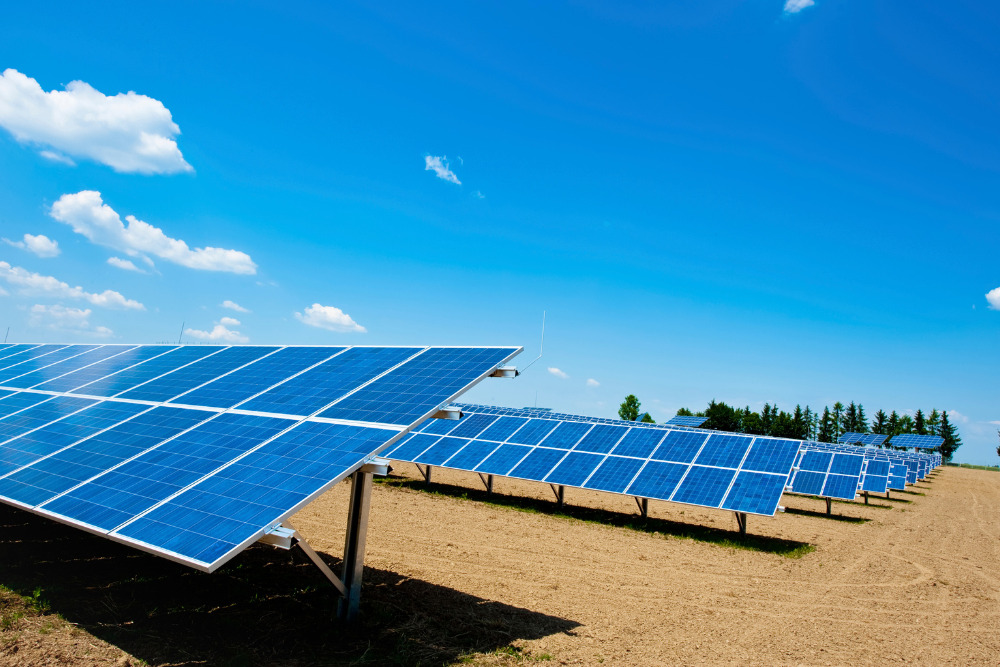
Renewable energy from solar panels allows farmers to be more in control of their energy sources and their expenses. Agrivoltaics cut down on operation costs, create clean energy for sustainability in operations, and can even increase crop yields.
What Is Agrivoltaics?
Agrovoltaics is the use of agricultural land for livestock, crop production, and pollinator habitats alongside solar energy production. It is also known as agrisolar, dual-use solar, or low-impact solar. If there is livestock grazing the land as well, it is known as solar grazing.
Generally, solar panels are ground-mounted above the crops or livestock areas. This is an excellent way for farmers to maximize land use and maintain agricultural productivity while generating renewable energy sources. Agrivoltaic systems minimize the trade-off between energy production and food production and give farmers the possibility of sustainability and efficient land use.
How Does Solar Energy Help Agriculture?
There are several ways in which solar energy systems help agriculture, including:
- Solar-Powered Irrigation Systems: In these systems, the power to operate pumps for the extraction and distribution of irrigation water is created by photovoltaic solar panels. Solar-powered irrigation systems also mean farmers have access to water during dry spells, which improves livestock and crop health and supports food security and income. Farmers do not have to worry about droughts affecting their crops or power outages affecting their irrigation systems.
- Solar Farms: A solar farm is a large-scale ground-mounted solar array that uses solar panels to generate power from the sun. Also known as solar parks or solar plants, these solar systems operate similarly to fossil fuel power plants, but with the use of solar energy instead. Because they are large-scale, the owner of the solar project can sell the energy they do not use to generate a profit. Another option for farmers is to lease their land for a solar farm and generate a profit that way.
- Solar-Powered Greenhouse Farming: Controlled Environment Agriculture (CEA) is becoming increasingly popular. Using solar energy technologies to heat water, solar drying systems, and solar heating and cooling systems can help greenhouse farmers keep their crops thriving. This saves a lot of money on electricity bills while providing a year round income source for farmers.
- Shade: Ground-mounted, elevated panels can provide shade to crops and livestock. This can be very beneficial in hot, sunny climates, as too much sun and heat can damage crops and can be detrimental to livestock.
- Water Conservation: Because they provide shade, solar panels reduce evaporation of the moisture from the soil below. The shade provided by the solar panels can also be used for water storage, as there is less risk of evaporation. The water used to clean the solar panels can even be reused for crop irrigation as long as no chemicals were used in cleaning.
- Preservation of Agricultural Sectors: Because solar developments are visible to the public eye, they may give rise to public opposition to taking away agricultural land for residential and commercial development. The American Farmland Trust states that by the year 2040, around 18.4 million acres of land will become residential or industrial development. Solar power systems may help to reduce that number.

What Are The Negative Impacts Of Solar Power On Farmland?
Though there are quite a lot of benefits to solar power on agricultural land, there are some drawbacks to mention as well.
- Land Conversion: One of the most significant concerns is the conversion of fertile agricultural land into solar farms. When large areas of farmland are repurposed for solar installations, it can reduce the availability of land for food production, potentially contributing to food security issues. This is why unusable and degraded farmland is usually considered first.
- Soil Disturbance: The construction and maintenance of solar panels can disrupt the soil and underlying ecosystems. Heavy machinery used during installation can compact the soil and disturb its structure, making it less suitable for agriculture in the future.
- Loss of Biodiversity: Solar farms can disrupt local ecosystems and wildlife habitats.
- Water Usage: Solar panels require cleaning to maintain their efficiency, which may involve the use of water resources. In areas with water scarcity, this can be a concern as it competes with agricultural water needs.
- Heat Island Effect: Solar panels can absorb sunlight and emit heat, creating localized "heat islands" that can affect nearby crops and ecosystems. This extra heat can alter microclimates and potentially stress vegetation.
- Maintenance Access: Solar panel installations may require access roads and infrastructure for maintenance. These roads can separate farmland, damage irrigation systems, and impact agricultural operations.
- Visual Impact: Some people find solar farms visually unappealing, which can impact the aesthetics of rural landscapes. This is a subjective concern but can be relevant in areas with tourism or scenic value.
- Chemical Use: The cleaning and maintenance of solar panels may involve the use of chemicals, which can potentially contaminate soil and nearby water sources.

Beyond The Farm — How Do Agrivoltaics Impact The Community Around Them?
Agricultural land represents an enormous opportunity to install utility-scale solar to support the local grid and power neighboring homes and businesses. This can give entire neighborhoods, and even cities, the opportunity to use renewable energy in their homes and workplaces.
Of course, not everyone is excited about agrivoltaics. Some neighbors may find them to be somewhat of an eyesore, and it may even drive property value down. However, it is a great opportunity to create efficient and sustainable land use, as well as benefit the community surrounding the solar farm.


